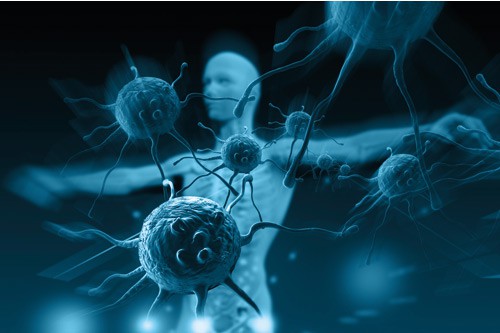
Traditionally, afflictions such as cancer have been treated with small molecule compounds that lack cell-specific targeting and thus have profound systemic implications. These compounds often have detrimental, non-specific effects that, together with their prolonged multi-dose administration and systemic exposure, yield severe side effects. In addition, such drugs often have very low therapeutic indexes where the window between a drug’s effective and toxic doses is narrow, making the optimal dosing a significant challenge for clinicians, and ultimately deteriorating treatment outcomes and patients’ well-being.
New therapeutic cancer vaccines
Recently, a new type of cancer therapeutics entered the market to counter these limitations and provide better treatment outcomes. Cancer immunotherapy enhances a therapeutic resource already in existence, the patient’s immune system. More specifically, cancer immunotherapeutic technologies such as therapeutic cancer vaccines, antibody-drug conjugates and checkpoint inhibitors make use of elements of the immune system to either elicit a sustained therapeutic response or to deliver potent anti-cancer drugs with greater specificity.
Therapeutic cancer vaccines effectively teach the patient’s immune system to recognise cancerous cells as a threat to produce a long-term therapeutic response. In the first and currently only therapeutic cancer vaccine, Sipulecel-T approved in the US in 2010 against prostate cancer, patients’ stem cells are collected and differentiated into dendritic cells sensitised to cancer antigens. Those dendritic cells can activate cytotoxic T-cells which, after replicating, track and eradicate cancer cells. After only three administrations, the patient becomes equipped with a functionalised immune system capable of fighting prostate cancer and, in principle, does not require further doses. This not only reduces the chance of side effects but also proves to reduce patients’ discomfort typically associated with prolonged cancer chemotherapy. In addition, this therapy is compatible with more traditional lines of cancer treatment. Apart from dendritic cell vaccines there are several other types in clinical development, including antigen and tumour cell-based vaccines.
Innovative cancer immunotherapy technologies are a result of our better understanding of complex diseases
Monoclonal antibody-based technologies have now been in use for decades targeting specific cancer cells to serve either as therapeutics (eg Genentech’s trastuzumab, Herceptin) or invitro diagnostics (immunoassays) or to aid radiotherapy (eg Biogen’s ibritumomab tiuxetan, Zevalin). It is the ability to identify a suitable target antigen, and then design and reliably manufacture antibodies with high specificity for the target molecule, that made monoclonal antibodies such useful tools with ubiquitous research and clinical applications. More recently, however, antibodies’ functionality was combined with small drug molecule therapeutics to improve treatment efficacy and eliminate many of the problems associated with non-specific treatments discussed earlier.
Antibody-drug conjugates are complex molecules consisting of a monoclonal antibody fused with a small molecule therapeutic via suitable linker and spacer molecules. The antibody contains tumour-specific epitopes driving the small molecule load to the tumour tissue and away from the healthy cells. Upon binding to tumour antigens, the antibody-drug complex is internalised by the cancer cell where the antibody disintegrates and the drug molecules interfere with essential cellular processes halting cancerous growth. Apart from improving treatment outcomes, antibody-drug conjugates allow for currently available highly potent but toxic agents to be successfully incorporated in clinically useful preparations. To date, the marketed antibody-drug conjugate preparations have utilised drugs that inhibit cell division processes of cancer cells. Adcetris (brentuximab vedotin, Seattle Genetics) targets Hodgkin lymphoma and systemic anaplastic large cell lymphoma antigens, and delivers a highly potent monomethyl auristatin E (MMAE) mitotic inhibitor. Kadcyla (trastuzumab emtansine, Genentech of Roche) targets HER2 receptors present in breast cancer and delivers an anti-microtubule agent T-DM1 to treat HER2-positive metastatic breast cancer in those who received prior treatment with Herceptin. There are currently more than 30 antibody-drug conjugate preparations in clinical development, with Pfizer’s inotuzumab ozogamicin having progressed into phase III clinical trials.
Waking up the immune system
One of the latest innovations in the field are checkpoint inhibitors capable of interfering with specific biochemical pathways of cancer cells exposing them to the action of the immune system. Immune checkpoints are molecules responsible for maintenance of self-tolerance and for regulating the amplitude and duration of T-cell mediated immune responses. Two notable immune checkpoint molecules, cytotoxic T-lymphocyte protein 4 (CTLA4) and programmed cell-death protein 1 (PD1), downregulate cytotoxic T-cell activation. Upon binding of checkpoint inhibitors to these molecules, T-cells become active and can contribute to the anti-cancer immune response. To date, three immune checkpoint inhibitors reached the market: ipilimumab (Yervoy, Bristol-Myers Squibb), nivolumab (Opdivo, Bristol-Myers Squibb and Ono Pharmaceuticals), and pembrolizumab (Keytruda, Merck & Co.) – all three marketed for the treatment of malignant melanoma. At least 14 preparations are now in clinical development, with AstraZeneca and Roche/Genentech having products in phase III clinical trials.
Breakthrough innovative therapies
The emergence of innovative cancer immunotherapy technologies is part of a global shift in pharma development away from small molecule therapeutics toward biologics. This in turn is a result of our better understanding of complex diseases including cancer but also blood, autoimmune and neurodegenerative afflictions. It is the improved understanding of the nature of cancerous growth and its interaction with the immune system as well as technical advances in monoclonal antibody development, cell line maintenance and manufacturing that ultimately allowed for breakthroughs and commercialisation of cancer immunotherapies.
Complex technologies call for specialised expertise and diverse technical capacities. It is generally understood that global activities concerned with the discovery and development of modern biopharmaceuticals will significantly contribute to advancing the frontiers of science and transform many therapeutic areas. The development of individual types of biologics poses unique and typically highly multidisciplinary challenges. For example, in cases of antibody-drug conjugates, challenges at pre-clinical development stages include toxin identification where drug target identification is key, as are high-throughput pharmacological screening and toxicology profiling of chemotherapeutic agents, drug-loading optimisation to achieve suitable antibody-drug ratio and distribution for best product performance, and antibody-drug conjugate manufacturing where small drug and protein molecules need to be assembled in aseptic conditions.
Complex technologies call for specialised expertise and diverse technical capacities
In addition to specialised technical capacities, companies require high levels of expertise and know-how to succeed in innovative biologics development. Overall, nowadays it is difficult for an individual company to have all the necessary ingredients for success. Consequently, with an increasing medical need for complex therapeutics in ambitious therapeutic areas (eg rare diseases), in order to succeed in maintaining satisfactory productivity and R&D returns, companies need to drastically rearrange their approach to R&D. It has become evident that narrowing and maintaining R&D focus helps cultivate much-needed expertise, while seeking external sources of innovation via licensing transactions opens new routes to growth and revenue. In this business model, it is usually the smaller, more agile companies that see higher R&D efficiency and profits. Increasingly, large multinational enterprises are gradually recognising the urgent need to transform their R&D strategies to achieve more freedom of research inquiry and operational flexibility, especially at early stages of development.
The future looks bright
With dozens of cancer immunotherapy products currently in development, the future of cancer therapeutics looks more than optimistic. Progress in immunotherapy combined with other emerging pharmaceutical technologies such as gene and cell therapies, as well as personalised medicine and diagnostics promise better, more adequate care and improved prevention for people with a higher risk of cancer. Although each product in development poses challenging problems, preparations such as cancer vaccines, antibody-drug conjugates and checkpoint inhibitors have already made a positive impact on cancer therapeutics and are likely to influence other clinical areas such as autoimmune and inflammatory diseases. At the same time, the development of these and similar biologics will continue to reshape pharmaceutical R&D, shifting its focus toward extensive collaboration and progressive specialisation.





